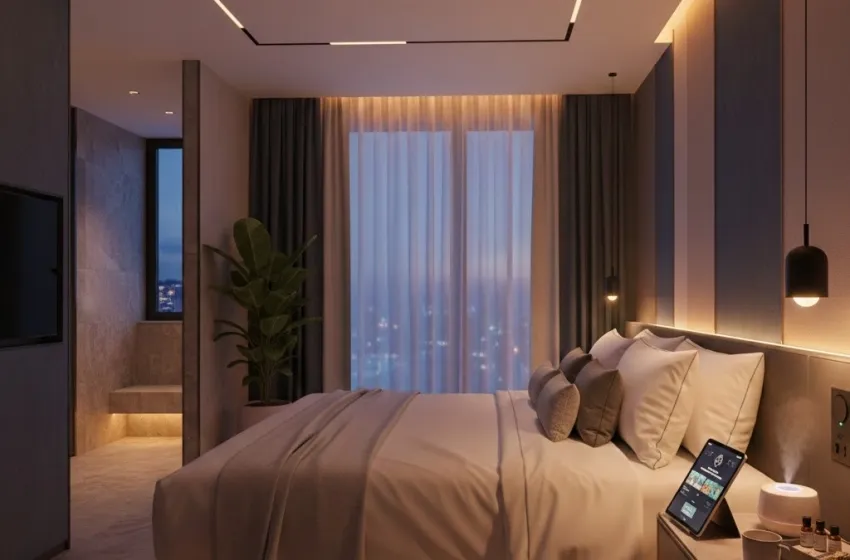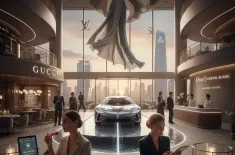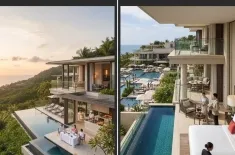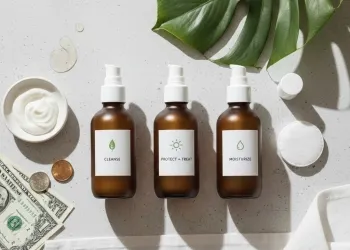Explore the design focus on sleep optimization in luxury hotels
The quest for truly restorative travel has ushered in a new era of luxury hospitality, shifting the focus from mere comfort to measurable, science-backed well-being. Today's discerning traveler seeks more than just a beautiful room—they demand a sanctuary meticulously engineered for peak rest and recovery. This fundamental change is driven by the profound realization that sleep optimization is the foundation of health, performance, and overall guest satisfaction. The design of the modern luxury hotel room has thus become an intricate exercise in chronobiology, employing advanced smart sleep technology and sophisticated circadian lighting systems to transform the overnight stay into a powerful wellness experience.
The Biological Imperative: Understanding Circadian Rhythms
The cornerstone of this design revolution is the circadian rhythm—the body's internal 24-hour clock that regulates the sleep-wake cycle, hormone release, and other vital functions. This rhythm is profoundly influenced by light, which is why lighting design has moved from an aesthetic choice to a critical biological tool.
The Role of Circadian Lighting
Circadian lighting is an intelligent system that mimics the natural color temperature and intensity shifts of the sun throughout the day, ensuring the guest's internal clock remains properly synchronized, even when traveling across time zones.
- Daytime and Morning: The system utilizes cooler, brighter light (higher Kelvin color temperature, e.g., 4000K to 6500K) rich in blue spectrum. This light suppresses the production of the sleep hormone melatonin and promotes alertness, cognitive function, and focus. In a hotel room, this is crucial for guests working, reading, or preparing for their day.
- Evening and Nighttime: As evening approaches, the lighting gradually transitions to warmer, dimmer tones (lower Kelvin color temperature, e.g., 2700K to 3000K), minimizing blue light exposure. This amber-rich light signals to the brain that it's time to wind down, allowing melatonin production to increase naturally and preparing the body for sleep.
This automated, seamless transition is essential for combating jet lag and ensuring a deeper, more therapeutic sleep, distinguishing a modern luxury room from a traditional one.
Luxury Hotel Rooms: Maximizing Restorative Sleep
Luxury hotel rooms explicitly designed with technology and features (mattress, lighting, sound) to maximize restorative sleep represent the pinnacle of this wellness-focused design. Every element is chosen based on its ability to support an optimal sleep environment, creating a true wellness room design.
The Sleep Foundation: Smart Mattresses and Bedding
The bed is no longer just a place to lie down; it is a bio-responsive piece of smart sleep technology.
- Adaptive Mattresses: High-end hotels are installing AI-powered or Restorative Beds that automatically adjust firmness, support, and temperature zones throughout the night based on the guest's body profile, movement, and sleep stage (e.g., light, deep, REM). This minimizes wake-ups caused by discomfort or overheating.
- Temperature-Regulating Linens: The optimal core body temperature for sleep is slightly cooler. Luxurious bedding utilizes high-tech, breathable materials like high-thread-count Egyptian cotton, bamboo, or Tencel, which possess excellent moisture-wicking and temperature-regulating properties. Pillow menus offer guests a choice of materials (down, latex, memory foam, buckwheat) to ensure perfect spinal alignment for side, back, or stomach sleepers.
Light and Atmosphere Control
Beyond the main circadian lighting system, auxiliary light control is paramount.
- Total Blackout: Automated, remote-controlled blackout curtains or shades ensure zero ambient light pollution, which is critical for deep sleep and melatonin production.
- Minimal Disruption: Subtly illuminated, motion-activated nightlights near the floor guide guests to the bathroom without requiring them to switch on harsh, disruptive overhead lights, preserving their sleep state. All electronic displays (thermostats, clocks) are designed to be dimmable or completely switch off.
Acoustic Sanctuary: Sound and Silence
Noise is one of the most significant sleep disruptors. A wellness room design must be an acoustic haven.
- Advanced Soundproofing: Walls, floors, and windows utilize superior acoustic insulation, often including triple-pane glass and sound-dampening construction materials, to eliminate external city noise.
- Curated Soundscapes: Integrated smart sleep technology includes a high-quality, in-room sound machine or soundscapes library. Guests can choose from options like white noise, pink noise (which has a deeper frequency and is often considered more relaxing), or natural sounds like gentle rain or ocean waves, which mask sporadic, sudden noises that can jolt a person awake.
Holistic Sleep Support: The Human Element and Amenities
While technology provides the infrastructure, the luxury experience is made complete by thoughtful, holistic services.
The Sleep Concierge
The emergence of the sleep concierge service provides guests with a personalized, human-centric approach to sleep optimization. This dedicated expert, either on-site or available via an in-room tablet, offers:
- Personalized Consultations: Advice on adjusting in-room settings, managing jet lag, and establishing pre-sleep rituals.
- Sleep Kits: Bespoke amenities such as essential oil diffusers with calming blends (e.g., lavender, Roman chamomile), soothing herbal teas (e.g., valerian root, passionflower), weighted blankets (known to reduce anxiety), and luxury eye masks.
- Guided Relaxation: Access to in-room meditation, breathwork, and yoga videos tailored for pre-sleep relaxation, often delivered through a bedside tablet interface integrated with the smart sleep technology.
Wellness Room Enhancements
The overall ambiance of the wellness room design is carefully curated to promote calm and lower stress hormones like cortisol.
- Biophilic Design: Incorporating natural elements (wood, stone, plants, natural light) has been scientifically proven to reduce stress and blood pressure, indirectly aiding sleep.
- Aromatherapy: Subtle, non-toxic scents that promote relaxation are used in both the room’s air purification system and turndown services.
- Air Quality: Advanced air purification and humidity control systems filter out allergens and maintain an optimal environment for easy breathing, another crucial, yet often overlooked, factor in deep sleep.
Restorative Travel: The Future of Luxury Stays
The move toward restorative travel signifies a paradigm shift where the journey’s primary goal is rejuvenation. For the luxury traveler, this means the hotel stay itself is an investment in personal health. Hotels that focus on circadian lighting and smart sleep technology are not just selling a room; they are selling a measurable health outcome—the guarantee of a deeply therapeutic night’s sleep. This commitment to the science of rest elevates the luxury hotel experience, ensuring guests depart feeling genuinely refreshed, mentally sharper, and ready to face the demands of their day, solidifying a new standard in global hospitality.



































